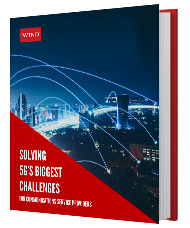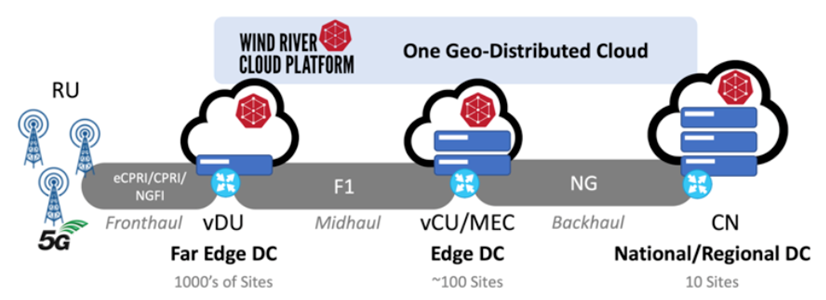5G network challenges: how to build out complex networks
5G network challenges will be categorically more complex than anything currently in production. Many factors contribute to this situation. For one, 5G networks promise to be incredibly dense compared to 4G. A single standard 4G macrocell can serve an area of approximately 25 square kilometers, whereas, with 5G, it will take 20 or more cells, with their respective antennas and RAN hardware, to cover the same area. When 5G traffic goes indoors, the coverage requires even greater density.
Guest blog written by Paul Miller.
This is a 4-part blog series on the main challenges facing 5G deployments and how you can solve them with the right tools. This post focuses on building complex networks, part 2 is about keeping costs low, part 3 covers infrastructure requirements, and part 4 explains the need to address new security issues.
Want to learn more about how to mitigate 5G network challenges with the right solutions?

Download our eBook: Solving 5G’s Biggest Challenges for Communication Service Providers: Download Now.
5G network challenge solution: massive MIMO approach
The Massive Multiple In Multiple Out (Massive MIMO) approach to wireless networking allows for the use of multiple antennas in data transmission. Massive MIMO gives 5G networks greater speed per antenna. It increases the number of transmitting antennas at the base station and mobile user endpoints (UEs). The result is the maximisation of data transfer through simultaneous sending and receiving.
The density of the 5G network thus drives an increased need for switching and associated traffic management. It also requires a lot of compute power at the edge due to the following:
- MIMO works through algorithms at both the base station and UEs.
- 'Beamforming' optimises bandwidth use but further stresses compute resources.
- 5G duplex (two-way) data traffic architecture and high speeds create volumes of data that dwarf those in 4G.
Mitigating 5G network challenges with the Wind River cloud platform
All of these changes in design and added stress levels on compute at the edge make 5G difficult to realise using traditional hardware-based RAN equipment. One solution that’s gaining traction in the industry is to virtualise the RAN. Virtualised RAN (vRAN), as realised through the Wind River Cloud Platform, enables consolidation of RAN management and savings on equipment.
The Wind River Cloud platform provides a flexible foundation for network-wide configuration, deployment, and management of edge applications and infrastructure. Running vRAN through the Wind River Cloud Platform creates a physically distributed virtualized infrastructure that hosts core network functions along with applications that are part of the 5G ecosystem. For telecommunications companies, this geo-distributed virtualisation approach is an industry first.
The Cloud Platform features an open-source, containerised design. It’s an end-to-end cloud solution that rises to the challenges of a geo-distributed network architecture. The Kubernetes platform supports Docker, Armada, and Helm, among other leading-edge open- source projects. Its containerised approach enables 5G network managers to deploy and change vRAN instances quickly and easily. The high availability platform also provides unified edge cloud management and network-wide orchestration - with the flexibility a 5G network needs to scale across a small footprint, from low cost/power single-node servers all the way up to full data centre configurations.

In practical terms, putting the Wind River Cloud Platform to work in 5G means separating the virtual Base Band Unit (vBBU) into two functions. As shown in Figure 1, these are the virtual Distributed Unit (vDU), which is close to the Radio Unit (RU), and the virtual Central Unit (vCU), which sits closer to the core. From there, the compute nodes that host the vDU 5G functions have to be geolocated at the far edge, close to the RU. The vCU can then aggregate thousands of vDU units.
The Wind River Cloud Platform is designed specifically for this 5G workload and to handle 5G network challenges. It can scale up or down, while also supporting the ultra-low latency and onboard accelerators required for real-time radio applications. All of this is managed through an intuitive Single Pane of Glass (SPoG) interface.
"The Wind River Cloud Platform is designed specifically to handle the 5G network challenges associated with building out dense networks."
Wind River: your partner in handling 5G network challenges
5G offers existing opportunities but also new 5G network challenges. CSPs must be able to build out dense and complex networks to meet the connectivity expectations of their customers. Using the massive MIMO approach will make it possible to simultaneously send and receive information for maximum data transmission. Supporting this technique with the Wind River Cloud Platform provides the key functionality you need while also keeping operating costs low.
Learn more about the capabilities of Wind River Cloud Platform.
Courtesy of Wind River.










